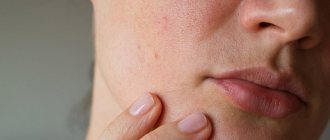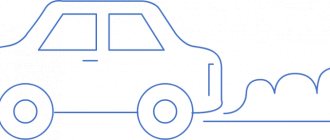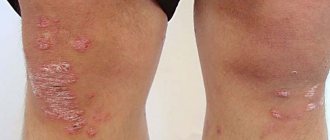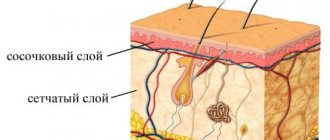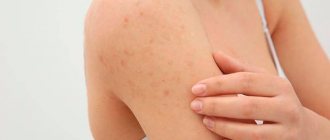Causes
Any skin rashes, be it redness, acne or peeling, are symptoms of problems with the body. It is important to promptly identify the sources of such formations in order to:
- learn in time about the development of a particular disease;
- quickly and effectively treat both the root cause and its consequences.
Fortunately, acne on the face, namely on the chin, does not always signal serious abnormalities; the reasons may lie in a banal lack of hygiene, why does this happen? The answer is simple: in this place the epidermis is dense, and it is more difficult for the resulting fatty secretion to get out. Plugs form that can lead to inflammation.
Let's consider the whole range of reasons, which can be both external (explicit) and internal (hidden).
External factors
The most likely triggers that can lead to skin imperfections are associated with external influences. Some of them are easy to eliminate, but others will have to be dealt with somehow. In any case, external causes have a lesser impact on a person’s overall health.
So, what are the external causes of acne on the chin, as well as under it and on the neck, is presented in the table.
| Source of origin | Description |
| Lack of cleansing | Excess sweat and sebaceous glands, anatomical features of the facial structure lead to an increased content of sebum, sweat and dirt mixed with them. This causes clogged pores and bacteria growth. |
| Mechanical impact | Rubbing your hands, wearing medical masks, and high collars act as irritants and contribute to the development of unpleasant rashes. |
| Extrusion | Getting rid of blackheads, opening comedones without proper disinfection, picking the face often causes acne on the chin on the right, left and closer to the neck in men, women and girls |
| Bad ecology | An increased content of dust particles, carbon dioxide, machine exhaust, and factory emissions in the air negatively affects the condition of the facial skin. |
| Weather | Heat and cold can cause acne |
Hidden factors
These include diseases and changes occurring in the body:
- Hormonal. They are characteristic of puberty, menopause, and pregnancy. Also, the background may be unstable during certain phases of the menstrual cycle, after childbirth and during breastfeeding.
- Disturbances in the functioning of the gastrointestinal tract. In this area, the spectrum of the disease is extremely wide. Both constipation and poor-quality food poisoning can cause problems on the skin.
- Genetic predisposition. We inherit a lot from our parents. Skin type is also passed down to us from mom or dad. If they have problematic or oily skin, or they often had acne and red spots in their youth or older years, then the answer to why acne constantly appears on the chin of girls lies in genetics.
Other reasons
Let's name a few more factors that can lead to problems on the face. The options listed below can be attributed to both internal and external sources, so it is worth highlighting a separate group.
- Poor nutrition. Diets, intermittent fasting, limited consumption of fiber and foods rich in vitamins and minerals, increased fat content, spiciness and saltiness of food.
- Stress. Psychological shocks, fatigue, intensity of the work rhythm, lack of rest.
- Lack of sleep and excess of the hormone cortisol, leading to increased formation of sebum.
Types and symptoms of periostitis
Periostitis can be acute and chronic, aseptic and infectious. Depending on the nature of the disease, several types of disease are distinguished, each of which is accompanied by typical manifestations. The disease can affect any bones, but most often appears in the lower jaw.
Simple
Simple periostitis of the tooth is an aseptic inflammatory process that develops against the background of a bruise or fracture, as well as in connection with foci of inflammation near the periosteum, for example, in the muscles. The disease is accompanied by moderate swelling of the soft tissues. They rise above healthy areas and pain occurs when touched. Usually the simple form of the disease is well treatable - inflammation can be overcome already on the fifth or sixth day.
Fibrous
Fibrous periostitis is formed during a long-term inflammatory process, begins gradually, and proceeds in a chronic form. Exacerbations may occur from time to time. This form of the disease involves the formation of new tissue on the surface of the jaw.
Serous
The serous form of the disease is accompanied by the formation of an infiltrate - serous exudate appears at the site of inflammation. In the absence of treatment for acute periostitis of this type of inflammation, there is a possibility of the development of purulent processes characterized by a more severe course.
Purulent
Purulent periostitis can be a consequence of infection, for example, with injuries accompanied by damage to the periosteum, the spread of the inflammatory process from other foci (phlegmon). The causative agents of inflammation are often streptococci and staphylococci. The disease is severe, with pronounced symptoms and fever. As a result, fistula tracts are often formed, through which purulent contents are discharged out into the oral cavity. In this case, temporary relief occurs, but the disease does not go away completely.
Acute periostitis with a predominance of putrefactive processes is also distinguished. The periosteum swells, disintegrates, and the purulent contents go directly to the bone, spreading into the soft tissues, which leads to phlegmon of the jaw. This dangerous complication can cause severe consequences and even death.
Symptoms of periostitis depend on the form of the disease, general health, the presence or absence of chronic pathologies, age, etc. Typical signs include the following:
- redness of the mucous membranes of the gums, swelling;
- pain that increases with pressure, chewing, or drinking hot drinks;
- increased body temperature;
- facial asymmetry, cheek swelling;
- enlargement of the submandibular, behind-the-ear, sometimes cervical lymph nodes, etc.
It is worth noting that the purulent form of the disease proceeds faster and is accompanied by symptoms of general intoxication, higher temperature, and irradiation of pain to the temple and ear. Many people note a characteristic pulsation at the site of inflammation.
Why do acne appear on the chin in women and men?
Many of these factors apply equally to everyone, but there are also those to which representatives of a particular gender are more susceptible. This is primarily due to the hormonal sphere and anatomical features of organisms. Many processes in the body occur in different ways. Let's look at the main problems.
Causes of occurrence in women
The most common situation is the approaching period. During this period, hormonal changes occur that affect sebum secretion. Gynecological diseases are also the troubles why a lot of acne appears on the chin of girls and women. Increased secretion of male hormones in the female body or hyperandrogenism also leads to acne.
Cosmetics can also be a problem. Of course, representatives of the stronger half also take care of themselves and strive to be beautiful, but this topic is still closer to the female sex. Poor quality makeup, expired or incorrectly selected creams negatively affect the condition of the skin.
Occurrence in men
Hyperandrogenism can cause acne and excess subcutaneous fat. Frequent shaving and the use of dull blades also contribute to irritation. Acne on the chin can appear in male athletes, the reasons lie in the use of any drugs - steroids or glucocorticoids.
Acne on the face: causes and treatment
There are many reasons for the occurrence of acne: the use of cosmetics with comedogenic ingredients, stress, genetic predisposition, taking medications (for example, anabolic steroids), gastrointestinal pathologies, etc.31,49,80. When prescribing treatment, the dermatologist also takes into account why the rash appeared. In the treatment of mild to moderate acne, azelaic acid, for example, Azelik®5,9, can be used. The drug is used twice a day5. It is applied to clean, dry skin5.
*acne
Varieties
Skin rashes come in different types. Some of them are painful and dangerous, others are more likely to cause cosmetic discomfort. The color of the formations is also different: from white and pink to black. Conventionally, they are divided into inflammatory and non-inflammatory. The latter include open and closed comedones. And there are many more types of first rashes. These are superficial, nodular and purulent pustules, cystic nodules, subcutaneous pimples on the chin, the causes of which can be found out by accurately determining the type of rash.
Let's talk in more detail about the main types.
Open and closed comedones
The first are plugs that arise in the ducts of the exocrine glands. Outwardly, they look like black dots. Their color ranges from light gray to dark brown. The fatty contents darken due to oxygen exposure.
Closed comedones are non-inflamed bumps that are located under the epidermis. The color of the rash is flesh-colored. They are not always noticeable, but can be felt with your fingers. Such internal pimples on the chin in women cannot be squeezed out, the reasons for this are simple: independent “treatment” of the skin and extraction of the contents leads to the appearance of scars and signs of post-acne.
Papules and pustules
The first are cavityless nodules located above the skin. They have a dense or soft consistency. Pustules are purulent cavity elements with a white head and liquid contents.
Papules may be superficial, appearing as red, outlined dots, or nodular. The latter differ in the size and presence of the inflammatory focus. Such internal pimples on the chin are painful on palpation; the cause may lie in inflammation of the hair follicle. No obvious purulent contents are observed.
Subcutaneous acne
An annoying problem that is difficult to deal with due to the fact that the source of inflammation is located deep under the dermis. The rashes are painful, take a long time to mature, and if you try to squeeze them out, traces remain in the form of fistulas, redness and even scars. It is difficult to quickly cure such a problem. Diagnostics, including laboratory tests, is of great importance.
Why do large or small internal pimples appear on the chin? There are several factors:
- endocrine disorders;
- disruptions in the gastrointestinal tract;
- decreased immunity;
- autoimmune diseases;
- frequent deep peeling;
- demodex.
Pink and whiteheads
Another variety is very similar in name, but very different in origin. It is a mistake to believe that rosacea and whiteheads differ only in color.
The first rash is characteristic of rosacea, a chronic dermatological disease. It is manifested by dilated capillaries, redness, swelling, as well as the presence of papules and pustules. Why such subcutaneous pimples appear on the chin is not entirely clear. The progression of the disease is influenced by hereditary factors, disturbances in vascular tone, and changes in the functioning of the sebaceous glands.
Whiteheads are otherwise called milia, prosyanki or retention cysts. Outwardly, they look like small light subcutaneous nodules. The inside is filled with keratin mixed with sebum. The formations do not hurt or become inflamed unless they are injured. Their usual localization is the eyelids, T-zone and area around the eyes.
Periostitis of the jaw (flux) - symptoms and treatment
Treatment of periostitis is always surgical; if you deviate from this rule, there is a serious danger of a limited focus of inflammation flowing into a more dangerous - diffuse form, which will require different treatment tactics and often hospitalization of the patient.
Treatment of periostitis is standard and consists of eliminating the source of primary inflammation and evacuation of pus, i.e., removing the causative tooth (in cases of unfavorable treatment prognosis) and surgically opening the site to its entire width, followed by drainage.
The procedure is usually performed under local anesthesia; in some cases, drug sedation is indicated; anesthesia is also possible. You need to understand that the introduction of an anesthetic into tissues strained by exudate (fluid accumulation) is an extremely painful procedure, therefore, the method of pain relief before periostotomy (opening an abscess) has its own specifics: conduction anesthesia is preferable (a type of anesthesia when the nerve is blocked to the operation site) followed by local anesthesia performed superficially with a thin needle, without immersing the needle into the abscess.
The diseased tooth must be removed in the case of an unfavorable therapeutic prognosis: the presence of large foci of bone destruction, incorrect previously carried out treatment of the canals, resulting in their perforation or blockage by a fragment of an instrument, etc. In cases of a favorable prognosis, endodontic treatment is carried out, which involves the removal of pulp decay from the canals, appropriate mechanical and medicinal treatment of the canals with a special instrument and powerful antiseptics to eliminate infection in them, followed by temporary filling with calcium preparations and temporary filling of the tooth. Subsequent X-ray monitoring is very important in order to confirm the effect of the canal therapy: the focus of destruction in the bone should decrease and subsequently disappear.
To evacuate pus, periostotomy is performed (dissection of the mucosa and periosteum) along the entire length of the infiltrate along the transitional fold.
As a rule, the surgeon detects a characteristic symptom - detachment of the periosteum from the bone, whereas in a healthy state the periosteum is firmly attached to the cortex. At this stage, the abscess is emptied, or the absence of pus is detected along with the periosteal reaction. The surgeon uses a blunt instrument to probe the entire abscess cavity to identify isolated lesions. In the case of the presence of pus, irrigation (washing) of the subperiosteal space with antiseptics is usually carried out, followed by the introduction of drainage (usually a strip of glove rubber) into the wound to prevent its edges from sticking together. The wound is not sutured; the patient is given a dressing after a day or two to remove the drainage [8].
In the absence of contraindications, antibacterial therapy (in most cases, semisynthetic penicillins) and NSAIDs (nonsteroidal anti-inflammatory drugs) are prescribed. In case of severe edema, desensitizing drugs are prescribed. It is also necessary to prescribe analgesics or their direct intramuscular administration after surgery, since in the first hours after treatment, when the effect of the anesthetic wears off, severe pain symptoms appear. It also makes sense to locally cool the infiltrated area with ice for several hours to reduce bleeding and swelling. The cooling time must be assigned based on the patient’s subjective feelings, and not on specific time periods.
Almost always, this treatment leads to a positive result: within a few hours the patient experiences relief, decreased pain and swelling. Although the infiltrate in the form of a moderately painful compaction will persist for several days.
A follow-up visit the next day is necessary to confirm the results of the treatment and possible removal of the drain if there is no discharge from the wound. Subsequently, the patient is observed by a doctor for 3-5 days; it is quite legal to issue a certificate of incapacity for work for this period. After the pronounced symptoms of inflammation disappear, they begin to continue treatment of the causative tooth.
In rare cases, for example, when the incision is of insufficient length or when the drainage falls out and the edges of the wound stick together, treatment may be complicated due to a delay in the evacuation of residual pus from the lesion. In these cases, the incision should be widened and drainage should be ensured by introducing drainage.
How to determine the cause
Diagnosis is made based on visual examination, medical history and laboratory tests. It is not always possible to cope with ordinary home remedies, and the use of aggressive substances containing alcohol can worsen the condition of the epidermis. Therefore, to find out why acne appears on the chin, you need to consult a doctor.
If there are menstrual irregularities or hormonal imbalances, women have their blood taken to analyze the level of free testosterone, follicle-stimulating and luteinizing hormones and DHEA-SO4.
Also, in the laboratory, seeding of the contents released from the rashes is carried out. The liquid is placed in a special environment, where the intensity of bacterial growth is visually assessed and inflammatory skin diseases are excluded.
When acne appears on the chin, the causes in women are sought using tests for cholesterol and liver enzymes, and this is also determined by determining the level of potassium in the serum. To rule out polycystic ovary syndrome and other problems in the pelvis, an ultrasound is performed.
Causes of periostitis
The cause of periostitis of the jaw can be trauma, as well as an inflammatory disease in the oral cavity - pulpitis, periodontitis, acute gingivitis, etc. More rare causes are rheumatic diseases, venous pathologies, specific infections, allergic reactions, chronic somatic diseases.
The classic variant of the development of the disease is caries complicated by pulpitis. Inflammation spreads to the periodontal tissues, periodontitis appears - inflammation of the periodontal tissues. If left untreated, the periosteum is also affected. In this case, we are talking about odontogenic periostitis - a disease that appears against the background of dental disease.
Ask a Question
Cosmetological treatment methods
Hardware and injection cosmetology have a wide arsenal of skin care products. These are techniques based on electric pulses, laser exposure, heat, and magnetic fields. Most procedures are not performed during pregnancy and lactation. Each of them must be prescribed by a cosmetologist. Only after finding out the cause can you begin therapy.
In cosmetology there are two main methods of struggle:
- Ultrasonic cleaning. The procedure shows high efficiency and successfully eliminates blockage of skin pores. Its essence is to treat the problem area with an ultrasonic nozzle. The device creates vibrations that help break the intercellular connections of the stratum corneum. Dead cells are exfoliated and accumulated impurities are removed.
- Darsonvalization. If the cause of acne on the chin is not associated with serious diseases, then the procedure will definitely get rid of the cosmetic defect. This is a physiotherapeutic method based on microcurrents. The device stimulates metabolic processes in the skin and stabilizes sebum production. Darsonvalization can be remote (impact on the upper layers of the dermis) and contact (on the deep).
- Injections with CURACEN, which is widely used to care for various types of facial skin. This is a unique injection product based on human placenta hydrolyzate, which was developed by scientists from the Japanese Corporation Japan Bio Products CO., LTD specifically to eliminate skin imperfections. The most important difference is the natural origin of all components. Therapy using Curasen gives a pronounced and clinically significant result.
Hormonal acne is a disease of adulthood
16.08.2021
Acne and acne are considered a teenage problem. However, many adults struggle with pimples and blackheads on the face and other parts of the body. In such cases, so-called hormonal acne . What causes this and what treatments are possible?
Causes of hormonal acne
The most common dermatosis is acne . The disease affects up to 8 in 10 teenagers, but most decline towards the end of puberty. However, there are people who, despite their adulthood, still struggle with painful skin lesions called hormonal acne . This problem affects women more often than men.
The cause of this type of acne is a hormonal imbalance, as a result of which an excess of hormones or, conversely, a deficiency occurs, and hormonal hypersensitivity of some organs is also possible. This problem is related to male hormones or androgens. Violation of their secretion can lead to increased activity of the sebaceous glands, and excess sebum is an excellent breeding ground for Propionibacterium acne bacteria, which are responsible for the occurrence of acne .
The appearance of blackheads and acne can be the result of poor personal hygiene, inadequate nutrition, exposure to chronic stress and improper skin care.
How does hormonal acne manifest?
Typical symptoms of hormonal acne are closed or open papules, pimples , nodules, usually located on the forehead, chin and jawline. These changes can also spread to the skin of the neck , décolleté and back . The resulting pimples are often accompanied by pain and severe inflammation.
Diagnosis of hormonal acne
Hormonal acne is difficult to treat on your own, so the best solution is to discuss it with a dermatologist. Based on anamnestic data and clinical manifestations, a dermatologist can make a preliminary diagnosis. If your doctor suspects that hormonal imbalances may be causing the changes, he will most likely recommend a hormone . Usually the concentration of hormones , such as:
- thyroid hormones (TSH, FT3, FT4);
- prolactin;
- insulin;
- free and total testosterone;
- dehydroepiandrosterone (DHEA);
- luteinizing hormone (LH);
- follicle stimulating hormone (FSH).
Women should be informed that in their case hormonal tests should be carried out on a certain day of the menstrual cycle.
How to care for acne-prone skin?
Unlike juvenile acne , hormonal acne causes milder symptoms but is chronic and therefore more difficult to treat . Treatment must last for at least several months to see its effects.
Depending on the symptoms and their severity, your dermatologist may recommend therapy with benzoyl peroxide or adapalene peroxide creams, ointments, or gels. therapy is often necessary . If the disease is advanced, systemic treatment based on antibiotics and retinoids is introduced.
In addition to pharmacotherapy, it is also important to properly care for skin with acne . It should be cleaned regularly to remove dead skin cells, accumulated dirt and bacteria. A good choice is dermocosmetics designed for sensitive and oily skin, products with exfoliating, antibacterial and antiseborrheic properties. After cleansing, the skin needs to be moisturized. Single lesions can be treated with spot treatments based on tea tree oil and zinc.
To combat acne , you can use herbal infusions of nettle leaf, horsetail, tricolor violet and willow herb with small flowers. These herbs improve metabolic processes and regulate sebum secretion.
Published in Dermatology Premium Clinic
Homemade beauty recipes
They have existed since ancient times. Among them there are those that help get rid of unpleasant rashes. Many of them are harmless and do not require consultation with a specialist, but it is still better not to self-medicate.
So, knowing why pimples appear or have already appeared in the chin area, you can use the following safe methods to eliminate them:
- Using aloe juice. This plant is known for its bactericidal effects. Nectar is used in its pure form to wipe problem areas or in combination with other ingredients. Its leaves can be stored in the refrigerator.
- Cucumber masks. Cucumber juice tones and helps tighten pores. Lotions are often made from grated vegetables. To do this, pour boiling water over the pulp and leave for three hours.
- Soda. If rashes do not appear due to demodex, then you can use a lotion based on this product. To do this, soda is mixed with sugar and dissolved in warm water.
Medications
They are prescribed by doctors in accordance with the data of laboratory tests of blood, smears, cultures and others. These can be gels, ointments, creams, masks, injections and systemic preparations for oral administration. Some are necessary for direct treatment, others for prevention. Most medications should be used in courses.
If it is possible to find out exactly why pimples appear on the chin, and acne comes out along with them, and the problem is the malfunction of the thyroid gland, then hormonal drugs are prescribed. If the problem is in the gastrointestinal tract, then adsorbents are prescribed, and in case of a bacterial infection, you need to take a course of antibiotics.
Cosmetical tools
Cosmetics allow you to provide proper care and at the same time proper cleansing and treatment of the skin. Most of them are designed to reduce sebum production and disinfection. This is not surprising, since its large amount creates a favorable environment for the growth of bacteria. The above funds include:
- salicylic and azelaic acids;
- zinc;
- benzoyl peroxide;
- vitamin A.
Another group of drugs is designed to increase local immunity and restore skin. Such products nourish, tone and rejuvenate the dermis. A striking example is Rhana Bb Laboratories gel fluid.
We recommend
Bb Laboratories – Placental cleansing foam
Curacen Essence (20 fl x 2 ml)
Bb Laboratories – Delicate oil for deep cleansing
Premium set “Ideal facial skin. Healthy tone"
Prevention
In order not to wonder why acne appears on the chin, you need to take preventive measures in a timely manner. It is based on proper nutrition and care. It is also worth considering the following tips:
- when a red lump appears, do not squeeze, apply ice, apply a targeted ointment;
- do not increase the number of washes - the dermis needs its sebum to maintain hydration and elasticity;
- You need to play sports in breathable light clothing, and take a shower after training;
- It is recommended to spend more time in the fresh air, and to ventilate the premises.
Proper nutrition for acne
Fine:
- Foods rich in dietary fiber and pectin (buckwheat, pearl barley, bran, broccoli, spinach, Brussels sprouts and others).
- Foods high in zinc: liver, beef, seafood.
- Cooking food by steaming and in a slow cooker. This way, more nutrients are retained and a minimum of fat is used.
- Foods rich in vitamin A (fish oil, carrots, corn), B (cheese, cabbage, wheat cereal), E (vegetable oils, green peas, wheat germ, parsley).
Badly:
- roast;
- salty;
- spicy;
- fat;
- sweet;
- monotonous.
The recommendations are obvious and very simple. Therefore, when they ask why there is acne on the chin, doctors first of all find out the diet.
Caring for problem skin
It is recommended to wash with cool water. It is better to use special lotions, foams, micellar, but not soap with a high alkali content. Once a week you can make cleansing masks based on clay, use a scrub or light peeling.
Creams with hyaluronic acid, collagen and urea are suitable for moisturizing. Nutrition is provided by products containing panthenol, vitamins and microelements.
Causes of acne in adults
11.11.2021
Acne is most often associated with a problem among teenagers. Probably, most of us in adolescence struggled with acne on the face , appearing unexpectedly and at the most inopportune moment. Acne is associated with major hormonal changes that occur in our body during this turbulent period. Teenage acne can be more or less persistent, the skin is usually oily, seborrheic, and pimples most often appear on the forehead, nose and chin, that is, in the so-called T-zone. What to do when you approach 30, even 40 years old, puberty and hormonal storm are already behind you, but the problem persists? Such ugly skin lesions deprive us of self-confidence, cause many complexes, reduce self-esteem, and cause disappointment, which affects our professional and personal lives.
Causes of acne in adults
This problem affects women more (approximately 12%) than men (up to 3%). Contrary to popular theories that hormones , they are less important in this case. Yes, these are not rare cases when women struggle with endocrine disruptions. This happens, for example, when we stop taking birth control pills. Acne medications :
- Creams, ointments, supplements
- Cleansing patches
- Spot treatments
- Day creams, night creams
- Facial gels , peelings
- Masks, tonics
A consultation with a gynecologist or endocrinologist will be required to determine the level of hormones at different levels (sex and thyroid hormones , hypothalamus, pituitary gland , adrenal glands) to eliminate deeper health problems.
The main reason is a busy lifestyle and stress, which stimulates the adrenal cortex to produce cortisol. An unhealthy diet , rich in highly processed foods and a high glycemic index, increases the production of androgens due to rapid spikes in insulin, which also causes increased seborrhea . Very often, acne is also a symptom of lactose intolerance, found in milk and dairy products. Working indoors with air conditioning, environmental pollution, smoking, and improper care, unfortunately, only work to the detriment of our skin.
How is acne in adults different from acne in teenagers?
- skin lesions are located elsewhere, i.e. most often in the lower face , around the jaw, mouth , chin and neck
- They are not as intense, but last a long time, leaving permanent scars, discoloration and unevenness on the skin.
- the skin, despite the increased production of sebum, tends to dry out
- hyperkeratosis occurs at the mouth of the hair follicles, where anaerobic bacteria begin to multiply
How to cure acne in adults?
Unfortunately, treating acne in adults is very complex, time-consuming and requires a lot of systematic work. acne care does not bring the desired results and even increases dry skin, such a person sooner or later turns to a dermatologist . The most commonly used antibiotics are antibiotics (tetracycline, doxycycline) and retinoids. The former are very often effective only during treatment, and after its completion, skin problems return. However, problems may arise due to dysregulation of the bacterial flora of the gastrointestinal tract.
The effectiveness of isotretinoin, on the other hand, is much greater, but treatment with it is not the most pleasant and requires greater sacrifice. Isotretinoin is a derivative of vitamin A, a more aggressive form, and its exact mechanism of action is not fully understood. It regulates the processes of differentiation of epidermal cells, inhibits the activity of glands, which reduces the production of sebum. During the first stage of treatment, when the skin is cleared, its condition may deteriorate sharply, but the subsequent effects are impressive. The minimum treatment period is 5-6 months under strict medical supervision. Unfortunately, the side effects of isotretinoin are very unpleasant and problematic, and the list is long, such as excessively dry skin, liver , hair loss, and even depression .
Locally, for lesions on the face , gels or creams with antibiotics (erythromycin, clindamycin), with benzoyl peroxide, which acts on anaerobic bacteria, with retinoids, azelaic acid, adapalene with keratolytic, anti-inflammatory and anti-acne properties are prescribed. Caring for such problematic skin and the correct selection of cosmetics are of great importance. The skin should be thoroughly cleansed with mild water-based preparations (avoid milk), moisturized with non-comedogenic creams rich in plant extracts, vitamins C and E, retinol (its milder forms, for example, retinaldehyde), and delicate peels should be performed, preferably based on glycolic or salicylic acid. acid.
It is also recommended to take B vitamins, especially vitamin PP (niacin), biotin, vitamins E, C and trace minerals such as zinc, selenium and copper. The beneficial properties of pansies for skin conditions have also been known for centuries . Let's not forget to change our diet to more fresh fruits and vegetables, limit highly processed foods, fast food full of unhealthy fats, sweets and salt.
Published in Dermatology Premium Clinic
Let's sum it up
Let us briefly highlight the main points:
- Rashes occur due to excess sebum, which can be caused by both serious diseases of the body and lack of hygiene.
- Men and women may have different reasons.
- Treating a problem is always more difficult than following preventive measures.
- If acne appears, you should see a doctor, because this can prevent serious diseases.
High-quality cosmetics, medications and cosmetic techniques help to achieve good results in treating rashes. But first, don’t forget to find out exactly the reason why your chin breaks out with acne, and then do something about it.

